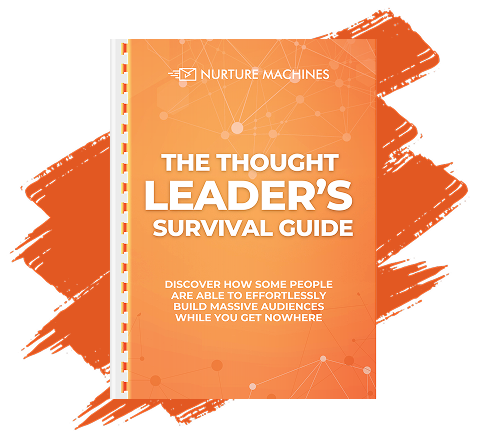Effective customer acquisition is no longer about choosing one good channel—it’s about selecting the right combination and adapting quickly. As digital touchpoints multiply, businesses must balance organic strategies like SEO and content marketing with paid tactics such as social media ads and retargeting. Understanding how each channel supports lead generation, engagement, and conversions is critical. This blog explores proven methods for attracting customers while keeping acquisition costs manageable. It also emphasizes how automation, analytics, and scalable tactics shape high-performing strategies. With the right tools and insights, businesses can optimize acquisition efforts and stay competitive.
Key Takeaways
- SEO, content, and social media are foundational channels for long-term acquisition success.
- Data-driven insights help refine strategies and eliminate underperforming tactics.
- Marketing automation enhances lead nurturing and improves conversion timing.
- Paid ads and retargeting support rapid acquisition when budgets and messaging align.
- Nurture Machine enables smarter, scalable customer acquisition through automation and analytics.
What Are the Most Effective Customer Acquisition Channels for Businesses?

Identifying the right channels is the foundation of any successful acquisition strategy. Businesses should balance organic and paid methods to both attract and convert prospects. This involves continuously evaluating channel performance and audience behavior. Effective channel mix adapts as market trends and technologies evolve. Below, we explore three key channels—SEO, content marketing, and social media—and how to optimize each for maximum impact.
How Does SEO Help Attract and Convert Customers?
SEO boosts a website’s visibility in search results to draw in relevant visitors. By optimizing on-page elements—like titles, headers, and meta descriptions—businesses can align with user search intent. Technical improvements, such as faster load times and mobile-friendly designs, further enhance rankings. Well-structured internal linking guides users to high-value pages and keeps them engaged. Regular content updates ensure freshness and encourage return visits. Monitoring keyword performance helps refine focus areas over time. A strong SEO foundation typically lowers cost per acquisition. Consistent optimization keeps traffic flowing and prospects moving through the funnel.
Why Is Content Marketing Essential for Customer Acquisition?
Content marketing builds trust and authority by delivering value before asking for a sale. Educational blog posts, guides, and videos address audience questions and pain points. High-quality content attracts organic links and social shares, amplifying reach. Each piece should include clear calls to action that guide readers toward next steps. A content calendar ensures consistent, timely delivery across formats. Repurposing top-performing assets—into infographics or webinars—extends their lifespan. Performance metrics like time on page and lead submissions inform ongoing improvements. Effective content not only attracts leads but nurtures them through the buyer journey.
How Can Social Media Marketing Boost Customer Engagement and Growth?
Social media enables brands to engage audiences with timely, interactive content. Platforms like LinkedIn, Instagram, and emerging channels each serve different segments. Posting a mix of educational tips, behind-the-scenes insights, and user-generated stories fosters community. Paid promotions on social networks can target high-intent users with laser precision. Real-time feedback—via comments and reactions—guides messaging adjustments. Influencer collaborations expand reach into niche communities and lend authenticity. Tracking engagement metrics like shares and mentions signals content resonance. When social campaigns align with broader marketing goals, they drive both awareness and conversions.
How Do Businesses Choose the Right Customer Acquisition Channels?

Choosing the right acquisition channels requires a deep understanding of your target audience and business goals. Factors like customer preferences, product type, and available resources play a central role. Businesses must evaluate past performance data and projected scalability when selecting channels. The best mix often combines organic and paid strategies, refined through continuous testing. Below, we explore the core considerations behind strategic channel selection and optimization.
What Factors Influence Channel Selection for Different Business Types?
Different business models demand different acquisition tactics based on product complexity and audience behavior. A company selling low-cost consumer goods may prioritize high-visibility channels like social media and paid ads. Businesses with long sales cycles often benefit more from educational content and email nurturing. Mobile-first audiences require responsive design and mobile-optimized campaigns across platforms. Geography and demographics also guide where to focus attention and resources. Assessing competitor activity helps uncover gaps and opportunities. Budget constraints may influence a preference for organic growth strategies. Ultimately, alignment with customer habits ensures better engagement and ROI.
How Can Data-Driven Insights Optimize Channel Performance?
Data insights reveal which channels consistently attract and convert quality leads. Monitoring metrics like conversion rate, cost per acquisition, and customer retention highlights top performers. Businesses can use dashboards to track real-time campaign outcomes and adjust strategies instantly. Segmentation based on behavior enables personalized targeting across high-performing platforms. A/B testing of messages, visuals, and CTAs refines campaigns for better results. Integrated reporting across all acquisition sources removes blind spots. Automated tools help compare channel effectiveness without manual tracking. This data-backed approach reduces waste and boosts marketing efficiency.
Why Is Scalability Important When Selecting Acquisition Channels?
Scalable channels allow businesses to grow without overwhelming their teams or budgets. Channels like SEO and content marketing improve over time as visibility compounds. Automation in paid campaigns and email sequences makes expansion smoother and more efficient. Businesses must assess whether each channel can support growth in new markets or customer segments. Adaptable platforms offer flexibility in messaging, targeting, and resource allocation. When supported by strong analytics, scalable channels are easier to optimize. Team bandwidth and technology must be considered when scaling efforts. Sustainable growth hinges on choosing channels that evolve with business demands.
What Are the Best Strategies to Maximize Results From SEO and Content Marketing?

SEO and content marketing work best when combined with a structured, data-driven approach. These channels drive high-quality traffic, position your brand as a trusted resource, and support long-term lead generation. Optimization begins with understanding user intent and targeting relevant keywords. Content must address audience needs while adhering to SEO best practices. Below are strategies that enhance visibility, engagement, and conversions through well-executed SEO and content efforts.
How to Optimize Website Content for Higher Search Rankings?
Higher rankings begin with aligning content to both user queries and technical requirements. Using descriptive title tags, optimized headings, and targeted long-tail keywords improves discoverability. Fast-loading pages and mobile responsiveness enhance user experience and support SEO. Content should offer comprehensive, accurate information structured with clear hierarchy. Including semantic keyword variations strengthens context and boosts visibility. Regular content audits help retire outdated material and refresh high-potential posts. Internal links guide visitors to key pages and reduce bounce rates. These efforts ensure your content stays competitive and ranks well consistently.
What Types of Content Attract and Engage Potential Customers?
Content that educates, solves problems, or inspires tends to resonate most with prospective buyers. Blog posts, tutorials, and infographics explain complex ideas in simple terms. Case studies and how-to guides demonstrate real-world value and build trust. Interactive elements like quizzes and assessments drive deeper engagement and time on site. Consistent branding and tone across all content assets improve recognition and credibility. Long-form formats often rank higher due to perceived value and comprehensiveness. Visual storytelling makes key messages easier to digest and share. A mix of evergreen and trending topics supports sustained and immediate traffic growth. Audience analytics should guide future content themes and formats.
How Does Marketing Automation Enhance Lead Nurturing?
Marketing automation helps deliver the right message at the right time through data-driven workflows. Automated sequences respond to behavior, segment users, and trigger timely follow-ups. Drip campaigns keep prospects engaged without overwhelming them with messages. Personalized content in emails, landing pages, and ads improves conversion rates. Analytics dashboards monitor flow performance and identify drop-off points. Integration with CRM systems enables smarter targeting based on customer history. A/B testing of automation rules fine-tunes lead journeys for optimal outcomes. With less manual effort, teams can scale lead nurturing without losing precision.
How Can Paid Advertising and Social Media Campaigns Drive Fast Customer Growth?

Paid advertising and social media are powerful for acquiring customers quickly and at scale. They allow precise targeting, immediate visibility, and dynamic engagement across platforms. When optimized, these channels drive traffic, boost conversions, and support brand discovery. Success depends on strategic budgeting, creative messaging, and ongoing performance analysis. The following strategies show how to use these channels effectively for rapid acquisition.
What Are the Most Effective Paid Advertising Platforms for Customer Acquisition?
Selecting the right platform depends on audience behavior and campaign goals. Search networks are ideal for capturing high-intent queries with text ads and responsive landing pages. Display networks increase visibility with banner ads across relevant websites. Social platforms provide rich demographic targeting and visual storytelling opportunities. Budget-friendly platforms support testing before scaling to larger audiences. Device targeting ensures ads are optimized for where users engage most. Geolocation tools allow campaigns to focus on specific regions or cities. Each platform should be evaluated for reach, cost, and alignment with conversion goals. A diverse mix of paid channels enhances reach and performance.
How to Target and Retarget Audiences for Better Conversion Rates?
Effective targeting starts with segmenting audiences based on behavior, interests, and stage in the customer journey. First-time visitors receive awareness-focused ads, while repeat visitors get conversion-focused messaging. Retargeting brings back users who showed intent but didn’t convert, reminding them of offers or benefits. Dynamic ads adjust content based on prior interactions, improving relevance. Frequency capping avoids overexposure and ad fatigue. Retargeting pixels track user actions and trigger timely follow-ups. Cross-device targeting ensures consistency across mobile and desktop. These techniques help maximize ad spend and increase the likelihood of conversion.
What Budgeting Strategies Maximize ROI on Paid Campaigns?
Budgeting begins with setting clear goals tied to performance metrics like CAC and ROAS. Daily or weekly monitoring allows marketers to reallocate funds to high-performing campaigns. Automated bidding strategies optimize ad placements and costs in real time. Performance data guides decisions on scaling or pausing specific creatives. Seasonal shifts and buyer behavior trends help determine when to increase or decrease spend. Campaigns should include test budgets for experimenting with new formats or audiences. Using cost caps and bid limits prevents overspending. Smart budgeting ensures campaigns remain efficient, agile, and profitable.
Frequently Asked Questions
What are the most critical customer acquisition channels for modern businesses?
The most critical channels include SEO, content marketing, paid advertising, email campaigns, and social media. These channels offer both organic and paid paths to attract and convert leads. Nurture Machine supports businesses by automating omnichannel engagement, allowing marketers to reach prospects across email, SMS, push notifications, and more. With AI-driven segmentation and behavioral targeting, businesses can align their acquisition strategies to where their customers are most active and responsive.
How does SEO specifically contribute to customer acquisition?
SEO boosts a brand’s visibility by improving search engine rankings, making it easier for potential customers to discover the business organically. It drives high-intent traffic by matching content with user queries, leading to more qualified leads. Nurture Machine helps businesses track SEO-driven conversions and integrate this channel into a broader acquisition strategy through real-time analytics and multi-channel insights, ensuring SEO efforts are aligned with performance goals.
What role does marketing automation play in nurturing leads?
Marketing automation enables personalized, timely communication that guides leads through the funnel efficiently. By automating follow-ups, content delivery, and trigger-based workflows, businesses can stay engaged with prospects without manual effort. Nurture Machine enhances this process by offering lifecycle automation, lead scoring, and behavioral triggers, helping teams deliver tailored messages that improve engagement and accelerate conversions.
How can businesses measure the ROI of their customer acquisition channels?
ROI can be measured by comparing the revenue generated to the cost of acquisition across each channel. Key metrics include cost per lead, conversion rate, and customer lifetime value. Nurture Machine provides real-time dashboards and attribution models that track performance across channels, helping businesses pinpoint which efforts drive the highest returns and optimize their budget accordingly.
Conclusion
In today’s competitive market, customer acquisition requires a blend of strategy, technology, and continuous improvement. Businesses must stay agile by analyzing performance, leveraging scalable channels, and responding to shifting buyer behavior. From content creation to campaign management, each decision should align with long-term growth goals. Tools like Nurture Machine support this journey by automating workflows, optimizing performance, and reducing acquisition costs. By mastering both organic and paid tactics, companies position themselves to attract and retain loyal customers. A strategic approach transforms acquisition from a challenge into a growth engine.






